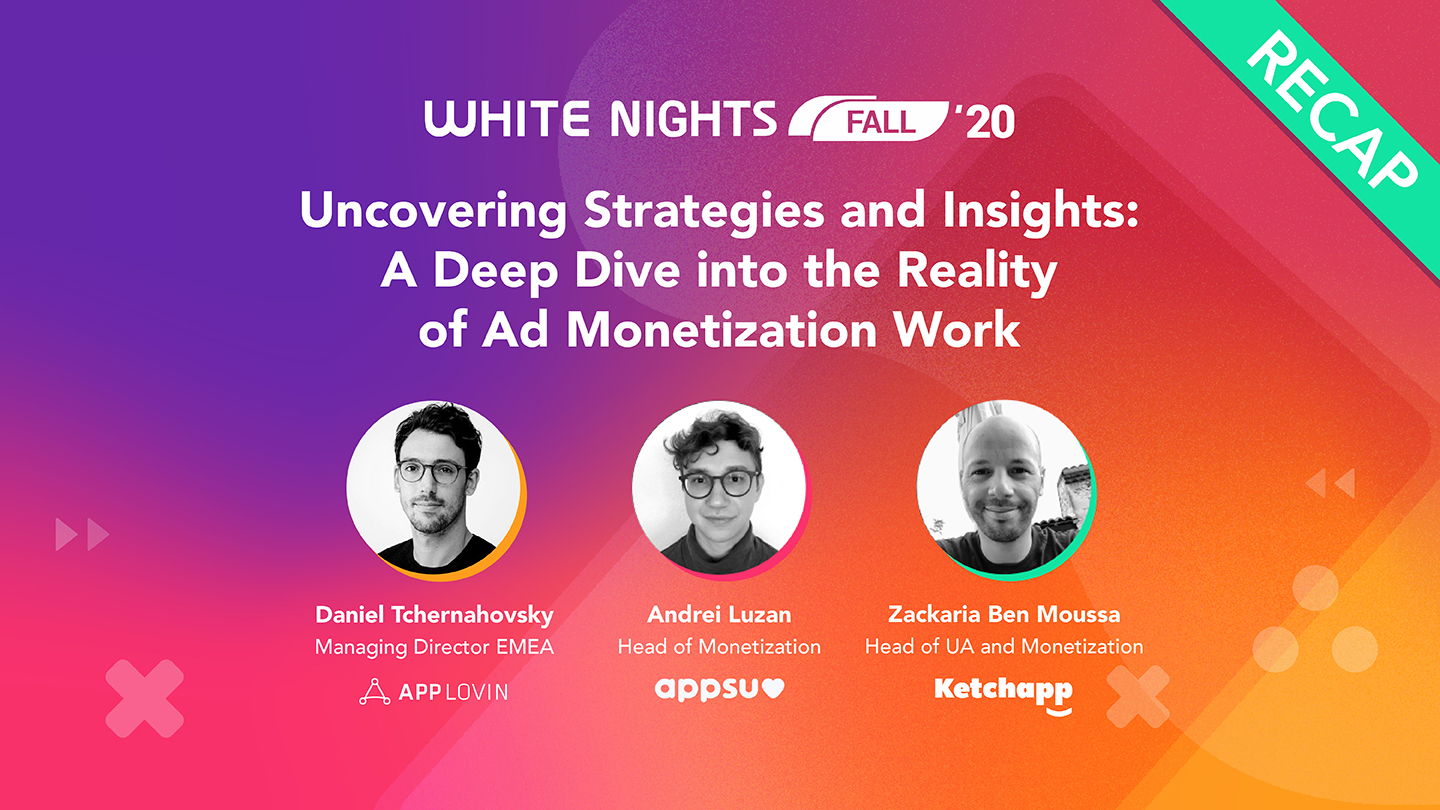Monetization
A Deep Dive Into Ad Monetization: 4 Things You Should Be Doing to Optimize Your Data
Nov 7, 2020

Monetization

AppLovin’s participation in this year’s White Night Conference focused on an ad monetization speaking panel, specifically diving deep on how to benefit from the data. Daniel Tchernahovsky, Managing Director EMEA at AppLovin moderated the virtual discussion, along with Zackaria Ben Moussa, Head of UA and Monetization, Ketchapp, and Andrei Luzan, Team Lead Ad monetization from APPSULOVE.
Andrei said he mostly focuses on a hybrid monetization model, saying, “We have a team working on IAP (in-app purchases) and IAA (in-app ads) to maximize on both sides.”
APPSULOVE has around 20 apps in its portfolio, and rely heavily on a day to day monetization strategy to make sure they are maximizing and using the data efficiently.
They mostly use a traditional approach in terms of ad format, including banners, interstitial ads, and rewarded video. Their strategy ensures they don’t interrupt too heavily with a good user experience.
Zack explained that almost all of their revenue share comes from ads. Ketchapp embraces a user-friendly approach and uses videos to engage users and banners regularly.
The trio talked about strategies they incorporate in their day-to-day routines. They also revealed what works well for their teams and why. Here are the biggest takeaways from their conversation.
Zach explained that Ketchapp has more than 150 apps that they monetize, so it’s important to look at the big picture first. “The first matrix we use is eCPMs, then and ARPDAU, as it’s essential for our daily work. Then we figure out what to do, based on what we see.”
Andrei agrees that he uses a similar approach. “We check to make sure the waterfall works correctly within all of our networks and is being captured correctly. We also keep an eye on all of the basic monetization metrics such as eCPM, fill rate, and ARPDAU. Then we look for an area to optimize performance in and get as granular as possible. We do this by examining the geo, ad format, ad networks, and look for weak spots to improve.”
In order to help the UA teams make informed, data-based decisions, Andrei says it’s important to use A/B tests as a way to optimize. “Take a look at waterfalls and all line items. Also, look at the eCPM and fill rate of the line items.”
To make sure you’re earning as much as possible for line items, benchmark specific ones, and run A/B tests to make the best decision. Both are intertwined. A/B testing is an easy and quick way to see results that are precise. You can do things like split your daily active users and see how the waterfall performs before and after, and then make comparisons.
The most important thing is to ensure that you’re generating value. Zack pointed out, “If it doesn’t bring enough value, then disable the weak line items or reach out to the account manager to help you further optimize A/B tests.”
He added that A/B testing has saved him a lot of time and effort and uses it on a daily basis at Ketchapp.
Seeing data from the user level is interesting for Zack, who explained some performance networks allow them to run user acquisition and measure ROAS at the source level.
By using AppDiscovery, AppLovin’s powerful user acquisition solution, UA managers can take their campaigns a step further with automation. By combining automation with consistent increases in ARPDAU from the monetization side via MAX, UA managers can reinvest the extra revenue into AppDiscovery to increase their campaign’s profitability and scale, exponentially.
Being able to acquire users at the right price through automation, ensures game developers aren’t wasting time and money. UA managers are better able to come up with different strategies to get to certain results and even predict LTV (lifetime value) of users.
The gaming industry moves quickly, so turning a profit needs to also move in tandem. While testing and coming up with strategies, make sure you’re getting correct data, figure out on a granular level what you want to test, and then see if your strategy works. From there, you can make the necessary changes and keep iterating and testing.
Curious about what MAX can do for you in your monetization strategy? Learn more here.